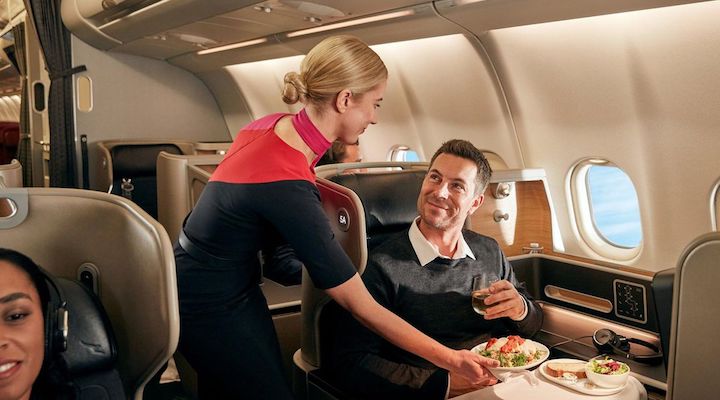The current economic crisis has retailers scrambling to generate consistent sales and retain their customer base. Long gone are days when businesses handed out loyalty cards to incentivise more frequent purchases – retailers are being urged by industry experts and leading brands to reimagine customer loyalty. Frequent flyer programs infamously saved airlines’ profit margins by driving customer retention and eventually lucrative partnerships with banks. The opportunity retailers are
ilers are leaving on the table goes well beyond offering exclusive discounts, it’s the chance to generate incremental customer retention that targets consumers who chose to opt into the brand.
Inside Retail spoke to Philip Shelper, founder and CEO of Loyalty & Reward Co, to better understand the chasm between airline loyalty programs and retail loyalty programs.
“In the current economic downturn, consumers are prioritising retailers which are delivering additional value,” Shelper told Inside Retail.
“Loyalty programs can be used to do this in a way that makes sense to consumers but also enables the company to control the costs,” he added.
Moreover, consumer loyalty programs deliver value for not only consumers but also retailers since they often result in personal databases, which, in conjunction with reporting and analytics, can inform personalised communications, experiences and offers to drive further sales.
Why airlines’ customer loyalty programs have gone the distance
Shelper revealed that the success of airline frequent flyer programs is due to their ability to cultivate two consumer psychological effects: effective commitment and calculative commitment.
“Effective commitment is generated by making members feel a sense of belonging and exclusivity via tier progression and desirable benefits,” explained Shelper.
“Calculative commitment is generated by the member’s fear that those benefits will not be accessible if they move to another airline.”
By leveraging both effective commitment and calculative commitment, airlines like Qantas, Virgin, Delta and United can drive long-term engagement and convert consumers to lifelong passengers.
“Airlines have a natural advantage with their loyalty programs; empty seats on plans which they can provide to members for little cost,” said Shelper.
How retailers can create first-class customer loyalty programs
However, with sales and discount codes quickly becoming the industry standard, retailers can’t match this value proposition for their loyalty members.
Instead, Shelper said, retailers should focus on providing cost-effective value to their members to encourage deeper engagement.
“Few do this well, but the ones that do are seeing exceptional results,” he added.
Myer appears to have taken a page from the airline playbook not only in its use of its Myer One loyalty program to resurrect the business but also with its recent appointment of former Qantas loyalty chief, Olivia Wirth, as its next CEO.
The ignition of the Myer One loyalty program was a pillar of the retailer’s “Customer First Plan”, which was implemented under outgoing CEO John King.
Today Myer One boasts more than 7 million accessible members and 4.3 million active shoppers, who are responsible for the majority of the $1.8 billion in revenue the retailer reported in first-half earnings.
Myer One’s revival is in part thanks to Myer’s investment in the rewards system and making it more than just another plastic card membership – a hard lesson for all retailers.
“Best practice loyalty programs are simple to join, understand and engage with; they provide valuable rewards which the customer desires; they generate and build on an emotional connection between the member and the brand; they differentiate the brand from competitors; and they constantly evolve to meet the ever-changing needs of members,” said Shelper.
The fact that Myer One program is not merely a perk but generates revenue for the business makes Myer an anomaly. But other Australian retailers are defining a new loyalty standard for the industry.
While Shelper holds up Myer One, The Pass and Club Rip Curl as case studies for other retailers to take cues from, he thinks retailers are barely scratching the surface of what could be made possible by strategic loyalty programs.
“A marketing database, sophisticated reporting and analytics capability, the ability to influence desirable customer behaviours, the opportunity to stimulate incremental customer acquisition, spend, retention and advocacy … the list goes on,” Shelper concluded.

